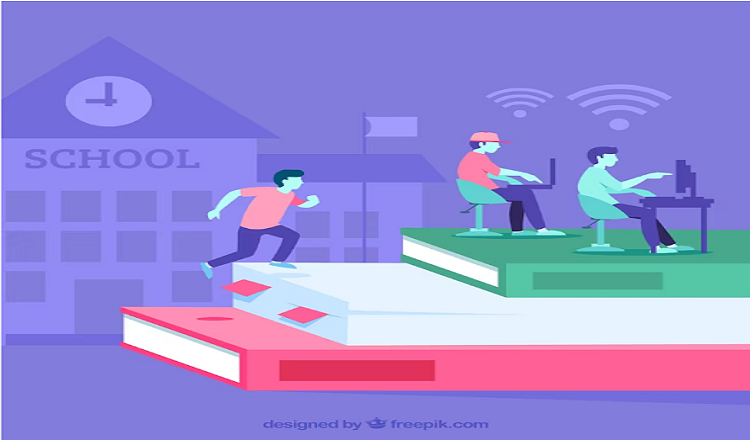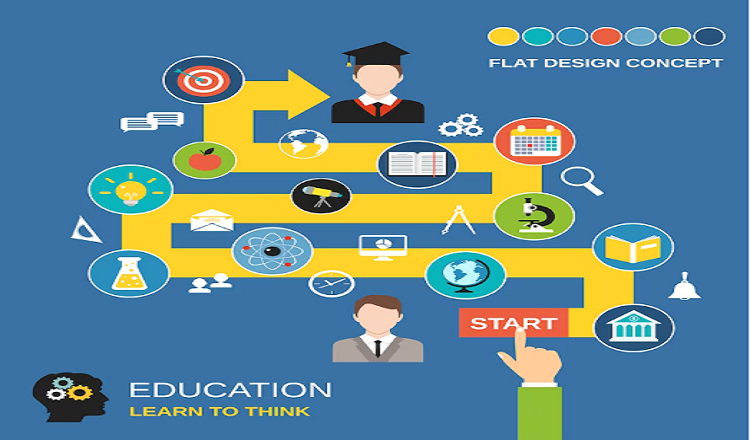One of the most significant areas of our life is education, therefore it’s not surprising that it’s always changing. The next ten years will bring several fascinating trends, from online education to artificial intelligence. Therefore, it’s crucial to keep an eye on the most recent educational trends that are developing in the United States if you’re interested in remaining ahead of the curve.
Personalised learning is one of the most important trends to watch out for. Over the coming ten years, there will be a continued change in education towards personalised learning, which has been developing in recent years. Personalised learning focuses on adjusting the educational process to meet the needs of specific pupils as opposed to using a one-size-fits-all strategy. Diverse strategies, including differentiated instruction and adaptive learning technologies, can be used to accomplish this. In this article, we’ll look more closely at how personalised learning is altering the educational landscape and how it will probably change over the next few years. So fasten your seatbelts and prepare to dive into the fascinating world of educational trends!
STEM instruction
One of the most important educational trends to have arisen in the US over the past ten years is without a doubt STEM education. The emphasis on STEM subjects—science, technology, engineering, and math—helps revolutionise how we teach and learn while giving kids the fundamental abilities they need to flourish in the twenty-first century. STEM education aims to foster students’ creativity, critical thinking, and problem-solving skills in addition to teaching them specialised courses.
In the US, STEM education has taken on more significance as a result of the rising demand for professionals in STEM-related sectors. It helps close the skills gap that many industries are experiencing by training students for the occupations of the future. Students are being inspired and engaged by the emphasis on STEM education, which is important for developing a diverse and inclusive workforce. STEM education is expected to play an even bigger role in influencing the educational environment and preparing students for the opportunities and challenges that lie ahead as we look to the future.
Online Education
The COVID-19 pandemic has only increased the popularity of online learning, which has grown quickly in recent years. It’s likely that online learning will continue to play a key part in the US educational scene as we look ahead to the coming ten years. One of the main advantages of online education is its accessibility, which enables students to learn whenever and from wherever. Online education also gives students more freedom and the chance to study at their own pace.
Online learning does come with some drawbacks, such as the possibility of technology problems and a lack of in-person interaction. Nevertheless, online education has proven to be a useful tool throughout the epidemic, and it is likely to continue to develop and get better over the coming ten years. It’s critical to investigate the possibilities of online learning and its influence on how US education will develop as we move forward in this new era of learning.
Machine intelligence
The potential for artificial intelligence (AI) to transform US education cannot be understated. AI may be utilised to construct intelligent tutoring systems, personalise learning experiences, and offer data-driven insights into student performance. AI is already being applied in education in many different ways, from adaptive learning systems that adapt to student needs to chatbots that assist students.
It’s possible that we’ll see more educational uses for AI as the technology develops and gets better. AI might be used, for instance, to create more accurate exams or to spot struggling pupils before they fall behind. But there are also worries about how AI might affect the teaching profession, as well as issues with bias and data privacy. The advantages and difficulties of using AI in education should be thoroughly considered, as with any newly developed technology.
Studying social and emotional skills
The goal of social and emotional learning (SEL), a crucial component of education, is to assist students in gaining critical life skills including self-awareness, empathy, and interpersonal interactions. Since educators have realised the need of addressing students’ social and emotional needs, SEL has grown in significance inside the US educational system.
Today, many schools incorporate SEL into their curricula, giving students the chance to acquire and apply these abilities in a variety of contexts. SEL has been found to enhance social and emotional learning, lessen behavioural issues, and boost prosocial behaviour. It’s likely that SEL will continue to gain ground as a crucial component of the educational landscape during the coming ten years, assisting in preparing kids for success both inside and outside of the classroom.
Initiative-Based Education
The educational approach known as project-based learning (PBL) places a strong emphasis on experience, hands-on learning. PBL enables students to interact with issues and challenges encountered in the real world while collaborating to find answers and produce meaningful results. This method encourages teamwork, creativity, and communication in addition to critical thinking and problem-solving abilities.
PBL is now being used in many US schools as a way to engage students and give them worthwhile learning opportunities. Students are better able to understand the significance of what they are learning and are more likely to be motivated and engaged when working on projects that have practical implications. PBL is probably going to continue to grow in popularity as we approach the next ten years as a successful strategy for preparing kids for success in a world that is changing quickly.
Gamification
As educators search for fresh and creative approaches to engage students and make studying more pleasant, gamification is a trend that is gaining popularity in the field of education. Gamification can assist in motivating and engaging students by introducing game aspects like points, awards, and competition into educational activities, making studying feel less like a burden.
Gamification has been applied to education in a number of ways, including online learning environments and in-class activities. To teach math or science ideas, for instance, teachers may utilise educational games. They might also add gamification components to tests to make them more interesting. Gamification is probably going to be employed as a method of fostering learning and engagement in the classroom for the foreseeable future.
Read More You May Like:











